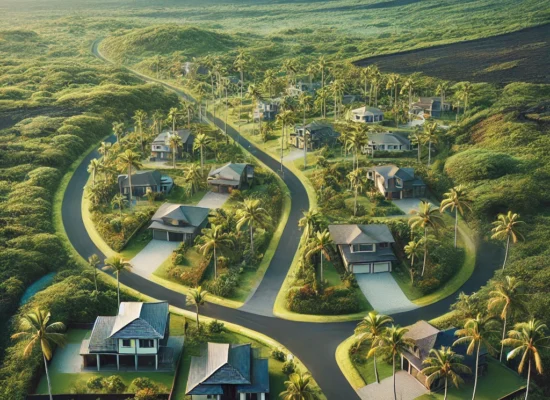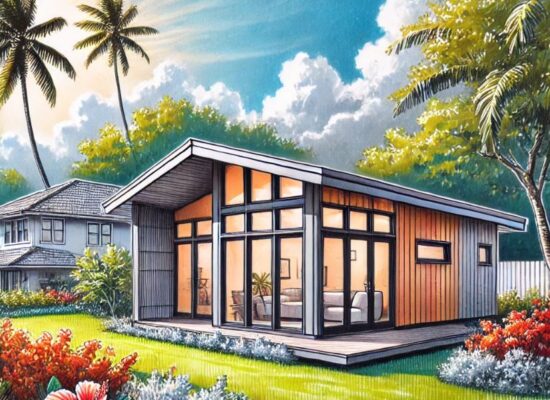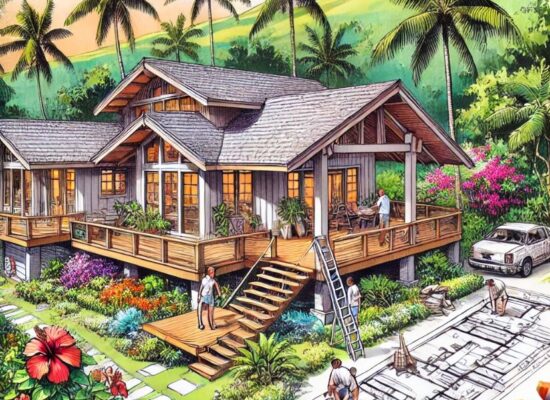- How to Optimize Space In Your New ADU
- Just How Big is a 400 sq ft ADU?
- What is an Accessory Dwelling Unit?
- What’s the 411 with Hawaii ADUs?
- What’s the 411 with Hawaii ADU’s: The FAQs Continued
- The Benefits of Building an ADU on Your Property
- Why Are ADUs So Important in Hawaii?
- Why ADUs Make Financial Sense
- Six Questions to Ask Yourself Before You Build an ADU in Hawaii
- The 9 Basic Requirements for Building an ADU in Hawaii
- Retirement Downsizing in Place with an Accessible ADU
Building an ADU on your property is one of the most beneficial things you can do for your neighborhood. It can provide cozy independent housing for retirees, extra housing space for family living with you, or provide a rental home for another family in need of affordable housing. However, building an ADU also comes with some specific limitations, one of which is how big your ADU can be in comparison to the size of your lot. Specifically, if your land is 3,500 square feet to 4,999 sq ft, the largest ADU you can build is 400 sq ft of internal floor space, including lofts. For larger lots, the upper limit caps at 800 square feet. But just how big is this in practical terms? How much walking space, how comfortable is the kitchen, and how many people can share the space without stepping on toes? 400 sq ft is small and 800 isn’t actually that much bigger.
Designing the Floor Plan
The key to building an enjoyable ADU is to understand exactly how much room you have to work with, then choose a floor plan that optimizes a comfortable lifestyle. In fact, the decision of floor plan is incredibly important to this process as you’ll need a design that fits well in your open yard space, is pleasant to live in inside, and suits the intended purposes. For a family, you’ll want to plan for private sleeping and clothing storage areas. For one or two retired elderly, a simple layout with plenty of wide spaces to move around in would be more convenient.
What 400 sq ft Looks Like on a Floor Plan
400 sq feet can be done in a lot of different ways depending on how you design it. The best way to think about a 400 sq ft is that it’s about the size of a two-car garage if square, and is usually about enough space for an open kitchen-living area, a full bathroom, and a one bedroom. The most important decision is how many walls to have. The fewer walls, the more open space you have, and most designs include an open kitchen and living room.
Designed long, you can put the bedroom and bathroom on the ‘private’ end and the kitchen and living room together on the other. This is better for narrow yard space and separating privacy space from visitor space. Square designs can provide more open space, especially if you’re willing to put the bed in the living area. Then, of course, there are all your non-regular options. L-shaped houses and other odd variations may provide for the exact distribution of space and yard use you’re looking for as well.
What About 800 st ft?
Okay, now let’s say you have quite a large plot of land and double that amount of ADU floor space. Now you have room for a separate kitchen and dining area if you want it, but in most cases, you’re better off investing in an extra bedroom or two to accommodate families with children. With creative storage, fold-away beds, and maybe another 3/4 bath, you could now comfortably fit a family of four or five in your ADU as long as they don’t mind small closets. For fewer tenants, you might add a study, guest bathroom, and a larger master suite instead.
Building a welcoming, family-friendly ADU is more complicated than it seems. You want to think carefully about who will be using the ADU and how you can make optimal use of the space available. If you’d like more ideas on how to design and build the perfect ADU plan for your property, please contact us today!
 Copyright secured by Digiprove
Copyright secured by Digiprove 



